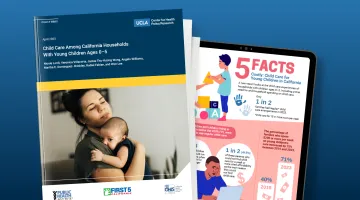Summary
California has a long tradition of providing publicly funded family planning services to low-income residents. The Affordable Care Act (ACA) increased contraceptive coverage in 2012, and in January 2014 it extended Medicaid eligibility by increasing the income cut-off from 100 percent to 138 percent of the federal poverty level and allowing individuals without dependent children to enroll. The impact of the ACA’s Medicaid expansion on low-income Californian women’s receipt of health insurance and needed health care was assessed, including contraceptive counseling and prescription contraception, using data from the 2013-16 California Health Interview Survey (CHIS) for 4,567 women ages 18-44 with low incomes (less than 138 percent of poverty). After the ACA expansion, the proportion of uninsured low-income women in California decreased significantly, while the share enrolled in Medicaid increased. However, the proportion of the women who reported using health care and family planning services remained unchanged. Despite the ACA’s explicit attention to contraceptive services, improvements in the delivery of family planning services have yet to be fully realized in California.








